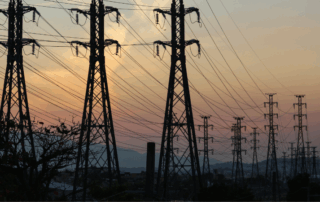Business Gas & Electricity Comparison
As energy prices continue to rise globally, understanding and managing your energy procurement strategy is more important than ever. Whether you are a large electricity user, natural gas user, or both, this article will help you understand what drives both costs, how to shop for lower-cost energy, and the best ways to develop an effective energy strategy for your business.
Impact Of Electric Vehicles (EVs) On The Grid
Electric vehicles (EVs) are quickly becoming a cornerstone of consumer transportation in the U.S., with their adoption profoundly reshaping how our electrical grid operates. This article explores how the rise in EV charging demand impacts the electricity market and what consumers can do to mitigate rising costs.
How Weather Affects Energy Markets: Risks, Volatility, and Strategic Planning
In today’s interconnected energy markets, weather is often the main driver of short-term price swings and long-term infrastructure challenges. For commercial energy customers and brokers, understanding this connection is essential to navigating energy procurement and mitigating risk.
Global Energy Supply: Trends Shaping The Future Of Energy Markets
Global energy markets in 2025 are being reshaped by a powerful mix of geopolitical risks, surging demand from AI and electrification, and record renewable growth. For businesses and energy brokers, understanding these supply-side trends is essential to anticipate volatility, control costs, and align procurement strategies with a rapidly evolving market.
Advanced Energy Storage Technologies: Powering The Future Of The Grid
Advanced energy storage technologies are reshaping the way businesses and grid operators manage electricity, offering new tools to store, dispatch, and optimize clean energy. As grid demand rises and renewable generation expands, these systems are becoming essential for improving reliability, cutting costs, and supporting the transition to a more resilient energy future.
Solar PPAs vs. Renewable Energy Supply: Which Is Better For Businesses Looking To Go Green?
Businesses exploring clean energy have two main options: solar power purchase agreements (PPAs) or renewable energy supply contracts. Each has unique costs, benefits, and sustainability impacts. Understanding how these strategies differ is essential for choosing the path that best aligns with your organization’s energy, financial, and renewable goals.





